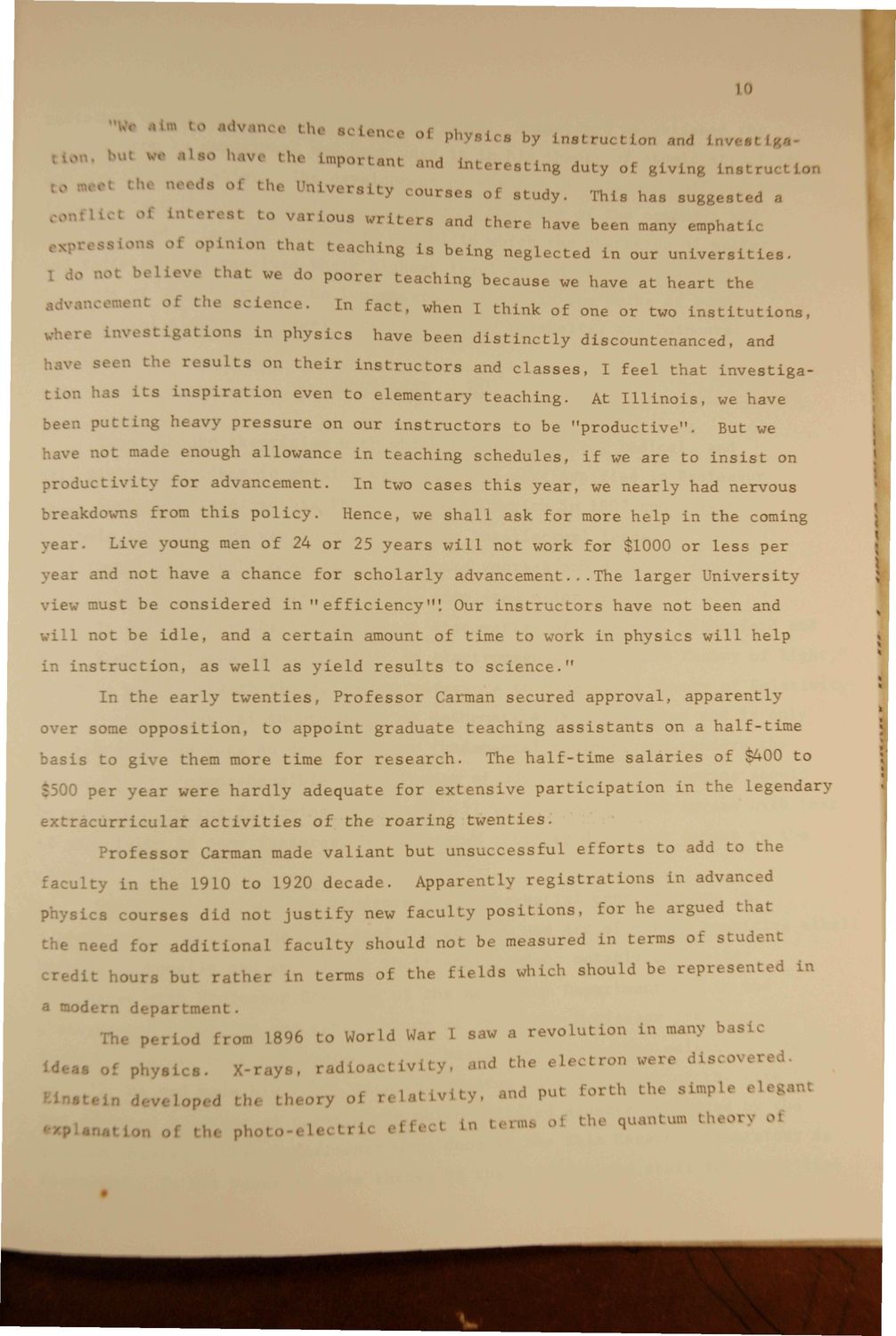Caption: Book - Century of Physics (1973)
This is a reduced-resolution page image for fast online browsing.

EXTRACTED TEXT FROM PAGE:
10 11 1U ol P*i • by ittru< - Loti and i. w« illO h.ive the important and lnt-pr*.f-4«« i i r . i «ii ana mi.i..siing duty of giving ins' rr vorsicy courses of study. Bt This has sugges d a ties. ' n l0Ua ^era and there have been many emphatic Pimon that teaching is being neglected in our univer eve that we do poorer teaching because we have at heart the the science. I< V In fact, when I think of one or two institutions, have been distinctly discountenanced, and gat ions in physics i the results on their instructors and classes, I feel that investigaD has bt . s inspiration even to elementary teaching. At Illinois, we have But we putting heavy pressure on our instructors to be "productive". have not made enough allowance in teaching schedules, if we are to insist on productivity for advancement. breakdowns from this policy. year. In two cases this year, we nearly had nervous Hence, we shall ask for more help in the coming Live young men of 24 or 25 years will not work for &1000 or less per ear and not have a chance for scholarly advancement... The larger University Lev must be considered in "efficiency"'. Our instructors have not been and will not be idle, and a certain amount of time to work in physics will help in instruction, as well as yield results to science." In the early twenties, Professor Carman secured approval, apparently over some opposition, to appoint graduate teaching assistants on a half-time asis to give them more time for research. The half-time salaries of §400 to 5500 per year were hardly adequate for extensive participation in the legendary extracurricular activities of the roaring twenties. Professor Carman made valiant but unsuccessful efforts to add to the faculty in the 1910 to 1920 decade. Apparently registrations in advanced Lcs courses did not justify new faculty positions, for he argued that the need for addi* onal faculty should not be measured in terms of student credit hours but rather in terms of the fif Ids which should be represent A in •- modern department. The pt-r I om 1896 to World War 1 saw a revolution in manv id. . of physics. t X i 78, radioactivl th( theory d the .1. tron w I in te. e discovered. oi relativity, and put forth the th, quantum tl or, oi . . . tric.l ,,
|